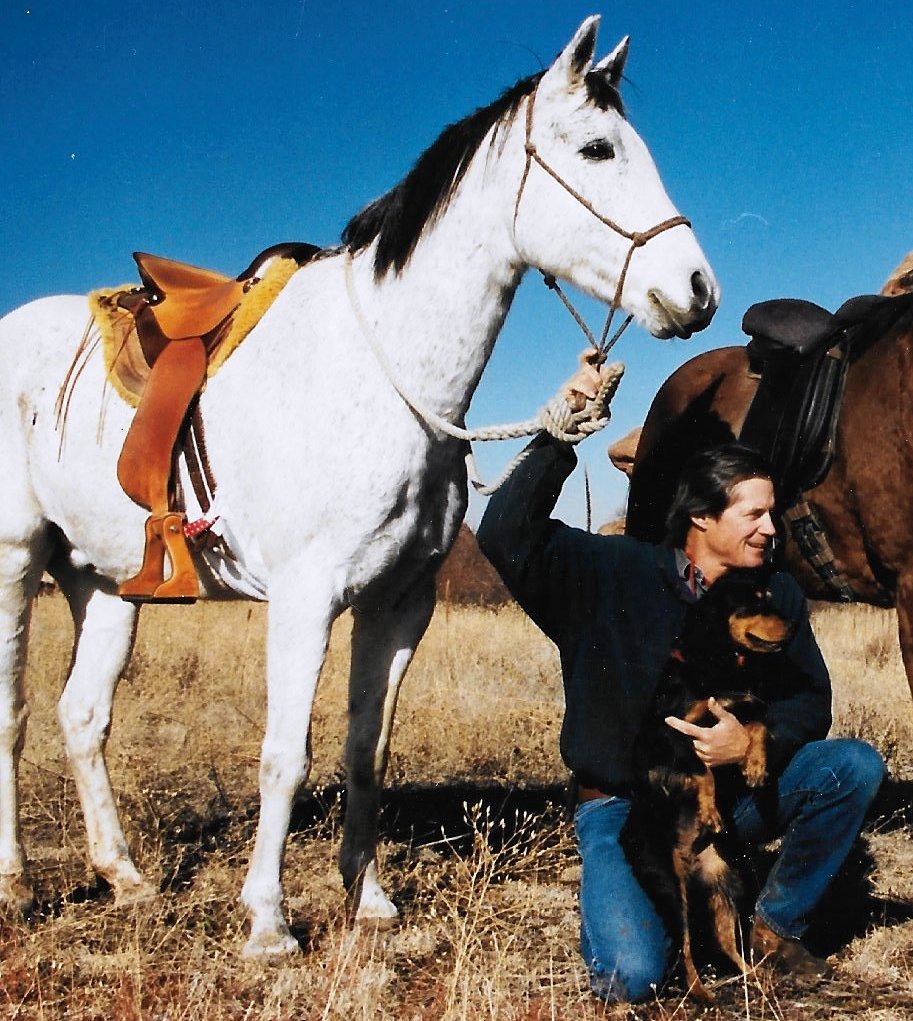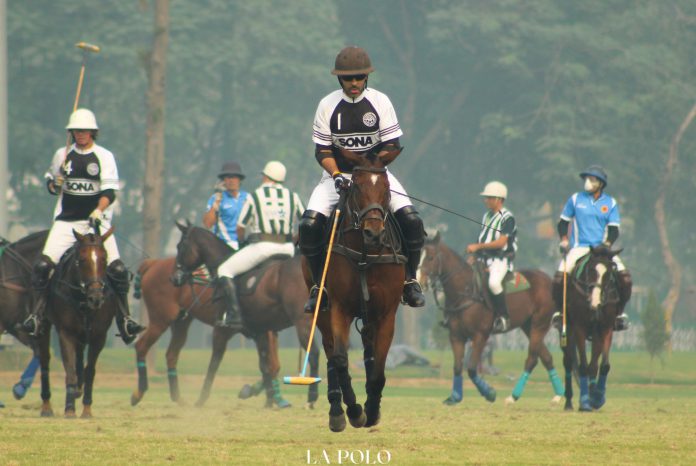Chaudhary says: “If you work with a horse thinking you only have 15 minutes it will take the whole day, but if you act like you have the whole day, it will only take 15 minutes. Rushing never works.”
Love and hate govern all relations amidst the living species. Love unites not just humans but different species together in harmonious ties. On the other hand, hate yields nothing but rupture and instability. This equation exists in the equine world too. Humans and horses engage in a variety of interactive ways like warfare, sports and art. To sustain this complex variety of interactions, a sophisticated and viable mechanism is required that can ensconce the relations in a happy and mutually productive equilibrium.
In ancient Greek and other ancient worlds, treatises were written down to help humans develop amicable bonds with horses. Xenophon, soldier, mercenary, historian, and a student of Socrates, highlighted the bonding thus: “The one best precept—the golden rule—in dealing with a horse is never to approach him angrily.” This rudimentary principle has survived the test of time and is the foundation of modern horse handling techniques.
Natural horsemanship, now famously known as “horse whispering”, is not only an art but an evidence of what love and compassion can build across species. It’s a knowledge which involves understanding of the mutual compatibilities of a horse and the person in charge of the stallion, to facilitate an effective bond.
The 1990s saw a particular fascination towards this aspect of the equine world. Nicholas Evans wrote in 1995 the US best seller “The Horse Whisperer” that was made into a fascinating Hollywood production as well. This upsurge in the interest towards horse whispering was the outcome of the efforts of revolutionary horse trainers and clinicians of the 1980s, Tom and Bill Dorrance, Ray Hunt, Monty Roberts and Monty Foreman. In “Think Harmony with Horses”, Ray Hunt writes down his philosophy to promote such effective bonds: “When you ask your horse to do something it should be his idea… he wants to do it, he understands how to do it, and he does it.”
Another well-known horse whisperer, Monty Roberts, who invented the “join up” method of horse training, was appalled at the way his father spoke harshly to horse. Monty dedicated his life to develop a safe and truly respectful way of training horses.

In the 1990s, another pioneering horse trainer and clinician, Frank Bell, crystallised the age-old wisdom in easy, comprehendible ways. Bell’s stepwise guide to gain confidence of the horse and establish an amiable partnership requires perseverance and patience. Bell’s methods underline the following dictum: “You only get one chance to make a first impression on all living creatures; I want to make the most incredible first impression this horse has ever experienced. If I succeed, I have an ally, a friend who will trust me. And trust is everything when it comes to working with horses. I call the first step bonding.”
The first step in that sense necessitates that we concentrate on not what we want from the horse but on what we can offer to it. Bell recommends “search touching” to let you discover the zones where the horse desires to be pampered. Rubbing the eyes, scratching under the jaws and even working your finger inside the nose of the horse shouldn’t make you dither from the path. When this bonding is established, one can begin to implement the “pressure and release” formula–the most fundamental to all training and communication methodologies. The movement of the head upon putting the pressure downwards can help the horse relax. If the head is high, it is an indication of an uptight, alert and nervous horse. Rewarding the horse under favorable conditions cements the understanding of desired behaviour.
After the successful testing of the above steps, one can move towards what Bell suggests as the “move to intimacy”. In this step, the horse is led to imitate the elemental position through which all life forms go through during their embryonic form in the womb. This cocoon of warmth and safety can actually raise the trust level. The head is guided towards the girth region by the pressure-release formula, by occasionally breathing into the horse’s nose which would make the horse curl up and experience sublime bliss.
Desensitizing techniques are influential in teaching behaviour and developing comfort with things that might cause irritation, fear and nervousness in the horse. Sending a horse into a stall, a paddock or a trailer significantly improves authority. Desensitizing, quite opposite to its negative connotations, helps the horse to eliminate its fear of the unknown in surroundings which might prove threatening at times. Frank Bells’ revolutionary methodology works on the magic of touch.
Horse whispering today is not any esoteric skill; it has become a fascinating vocational choice for equine enthusiasts. Manjeev Chaudhary, a horse whisperer trained under Monty Roberts, believes that horses learn from release and not from pressure. Chaudhary and his wife quit their corporate jobs to explore the aspect of natural horse whispering. Chaudhary says: “If you work with a horse thinking you only have 15 minutes, it will take the whole day, but if you act like you have the whole day, it will only take 15 minutes. Rushing never works.”
Can horse whispers one day loudly assert the extinction of whips? The answer might be difficult to obtain but the use of whips and other abusive methods remind us of a gory past; these tools of control are remnants of a coercive horse handling tradition. Horse whisperers have replaced the coercion tactics that involved pain, torture and abuse with a sophisticated and love-based method that gives horses the due respect they stand entitled to.In the 1990s, another pioneering horse trainer and clinician, Frank Bell, crystallised the age-old wisdom in easy, comprehendible ways. Bell’s stepwise guide to gain confidence of the horse and establish an amiable partnership requires perseverance and patience. Bell’s methods underline the following dictum: “You only get one chance to make a first impression on all living creatures; I want to make the most incredible first impression this horse has ever experienced. If I succeed, I have an ally, a friend who will trust me. And trust is everything when it comes to working with horses. I call the first step bonding.”
The first step in that sense necessitates that we concentrate on not what we want from the horse but on what we can offer to it. Bell recommends “search touching” to let you discover the zones where the horse desires to be pampered. Rubbing the eyes, scratching under the jaws and even working your finger inside the nose of the horse shouldn’t make you dither from the path. When this bonding is established, one can begin to implement the “pressure and release” formula–the most fundamental to all training and communication methodologies. The movement of the head upon putting the pressure downwards can help the horse relax. If the head is high, it is an indication of an uptight, alert and nervous horse. Rewarding the horse under favorable conditions cements the understanding of desired behaviour.
After the successful testing of the above steps, one can move towards what Bell suggests as the “move to intimacy”. In this step, the horse is led to imitate the elemental position through which all life forms go through during their embryonic form in the womb. This cocoon of warmth and safety can actually raise the trust level. The head is guided towards the girth region by the pressure-release formula, by occasionally breathing into the horse’s nose which would make the horse curl up and experience sublime bliss.
Desensitizing techniques are influential in teaching behaviour and developing comfort with things that might cause irritation, fear and nervousness in the horse. Sending a horse into a stall, a paddock or a trailer significantly improves authority. Desensitizing, quite opposite to its negative connotations, helps the horse to eliminate its fear of the unknown in surroundings which might prove threatening at times. Frank Bells’ revolutionary methodology works on the magic of touch.
Horse whispering today is not any esoteric skill; it has become a fascinating vocational choice for equine enthusiasts. Manjeev Chaudhary, a horse whisperer trained under Monty Roberts, believes that horses learn from release and not from pressure. Chaudhary and his wife quit their corporate jobs to explore the aspect of natural horse whispering. Chaudhary says: “If you work with a horse thinking you only have 15 minutes, it will take the whole day, but if you act like you have the whole day, it will only take 15 minutes. Rushing never works.”
Can horse whispers one day loudly assert the extinction of whips? The answer might be difficult to obtain but the use of whips and other abusive methods remind us of a gory past; these tools of control are remnants of a coercive horse handling tradition. Horse whisperers have replaced the coercion tactics that involved pain, torture and abuse with a sophisticated and love-based method that gives horses the due respect they stand entitled to.
Jean Pignon, dubbed as ‘Horse trainer, who tries to talk with fellow travelers as closely as possible, rather than trying to teach them the language of humans.’





